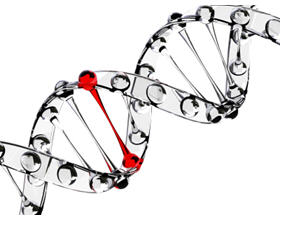
Autism and Schizophrenia Genes
Only Active in Developing Brains
OXFORD; February 12, 2013—Genes linked to autism and schizophrenia are only switched on during the early stages of brain development, according to a study in mice led by researchers at the University of Oxford.
This new study adds to the evidence that autism and schizophrenia are neurodevelopmental disorders, a term describing conditions that originate during early brain development.
The researchers studied gene expression in the brains of mice throughout their development, from 15-day old embryos to adults, and their results are published today in Proceedings of the National Academy of Sciences (PNAS).
The study is a collaboration between researchers from the University of Oxford, King's College London and Imperial College London, and was funded by the Medical Research Council and the Wellcome Trust.
The research focused on cells in the 'subplate,' a region of the brain where the first neurons (nerve cells) develop. Subplate neurons are essential to brain development, and provide the earliest connections within the brain.
'The subplate provides the scaffolding required for a brain to grow, so is important to consider when studying brain development,' says Professor Zoltán Molnár, senior author of the paper from the University of Oxford, 'Looking at the pyramids in Egypt today doesn't tell us how they were actually built. Studying adult brains is like looking at the pyramids today, but by studying the developing brains we are able to see the transient scaffolding that has been used to construct it.'
The study shows that certain genes linked to autism and schizophrenia are only active in the subplate during specific stages of development. 'The majority of the autism susceptibility genes are only expressed in the subplate of the developing mouse brain,' explains Dr Anna Hoerder-Suabedissen, who led the study at the University of Oxford, 'Many can only be found at certain stages of development, making them difficult to identify at later stages using previous techniques.'
The group were able to map gene activity in full detail thanks to powerful new methods which allowed them to dissect and profile gene expression from small numbers of cells. This also enabled them to identify the different populations of subplate neurons more accurately.
Subplate neurons were first discovered in the 1970s by Professors Ivica Kostović and Pasko Rakic of Yale University.
'I am excited to see tangible genetic links supporting, even indirectly, the idea of a possible role of the transient embryonic subplate zone in the origin of disorders such as autism and schizophrenia,' says Professor Rakic. 'If this is possible to show in mice, where the subplate is relatively small, it is likely to be even more pronounced in humans, where it is much more evolved.
'The study from Professor Molnár's group at Oxford may be the first step toward finding more such links in the future and opens the possibility of directly examining the roles of genetic variation and exposure to various environmental factors in animal models.'
Professor David Edwards, Director of the Centre for the Developing Brain at King's College London, and co-author of the paper, said: 'Using advanced techniques we have been able to define the biochemical pathways that are important during a particular phase of brain development. It has been suspected for a long time that if the development of the cortex is disrupted by genetic abnormalities or environmental stress (such as prematurity) this would have long-lasting adverse effects on brain development and could lead to problems like ADHD or autism.
'This study defines genes that are important in mice at this critical period and this does indeed seem to include genes known to predispose to autism and schizophrenia. It focuses attention even more firmly on early brain development as a cause of these distressing neuropsychological problems.'
Professor Hugh Perry, chair of the Medical Research Council's Neuroscience and Mental Health Board, said: 'By being able to pinpoint common genetic factors for neurological conditions such as autism and schizophrenia, scientists are able to understand an important part of the story as to why things go awry as our brains develop. The Medical Research Council’s commitment to a broad portfolio of neuroscience and mental health research places us in a unique position to respond to the challenge of mental ill health and its relationship with physical health and wellbeing.'
HARRY DAYANTIS
RELATED RESEARCH:
"Stray Prenatal Gene Network Suspected in Schizophrenia." (NIMH Press Release; August 1, 2013).
